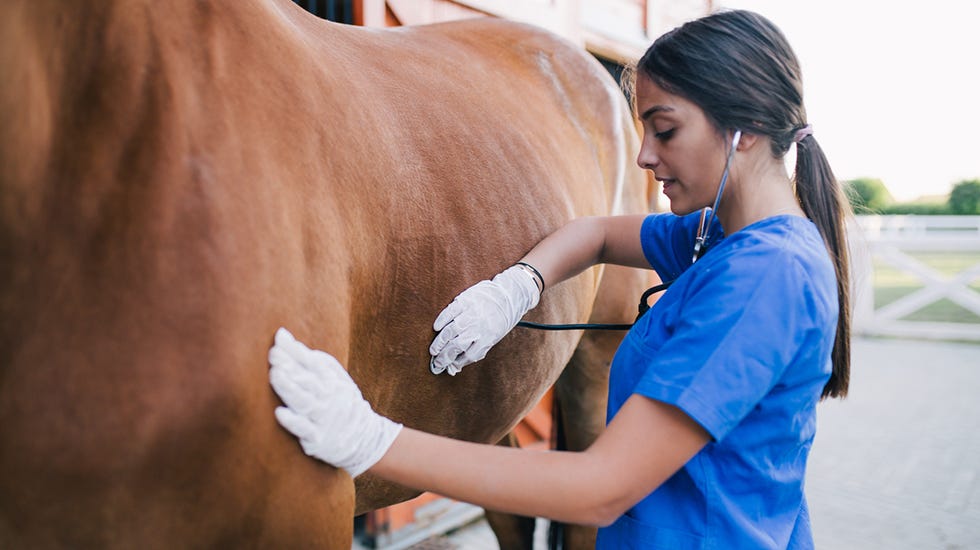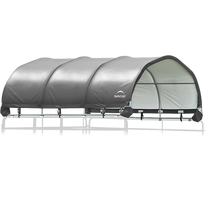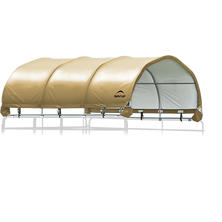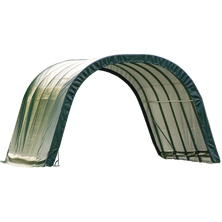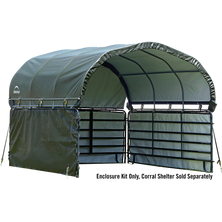If you’re caring for horses or other livestock, adding a livestock shelter to your property will help keep them safe, comfortable, and healthy. Both hot and cold weather create potential threats to our equine friends, so it’s critical to provide them with adequate shelter. While a barn provides full coverage, horses really need to be outdoors during the daytime. Adding a portable shelter to your property helps them stay protected from the elements while out in the pasture.
The following guide will tell you everything you need to know about how weather can affect horse health, how a livestock shelter can help, and how to choose the right shelter for your needs. Let’s get started!
How Weather Affects Horse Health
Extreme temperatures, precipitation, and wind can all cause major problems for horses. Here’s a look at some of the issues you need to watch out for.
Issues Related to Overheating
In the summer, it’s important to keep your horses comfortable by providing protection from the heat and sun. Without an easy way to cool down, horses can suffer from heat stress or even heat stroke. It's important to watch out for signs that a horse is overheating - including lethargic behavior, reduced skin elasticity, high body temperature, and dark urine.
If you notice a horse displaying any of these signs, it’s important to cool them off right away. Otherwise, there is a real possibility of serious health issues or even death.
Problems Caused by Winter Weather
Winter weather creates some issues as well. Horses naturally stay warm thanks to their hair trapping an insulating layer of warm air next to their skin. However, extreme weather can disrupt this system, causing a horse to become chilled.
For example, cold winds can ruffle their hair, releasing the trapped warm air. Cold, driving rain or sleet can release the warm air by flattening a horse's coat. If your horse gets too cold, it could suffer from several issues, including a dangerously low body temperature, called hypothermia.
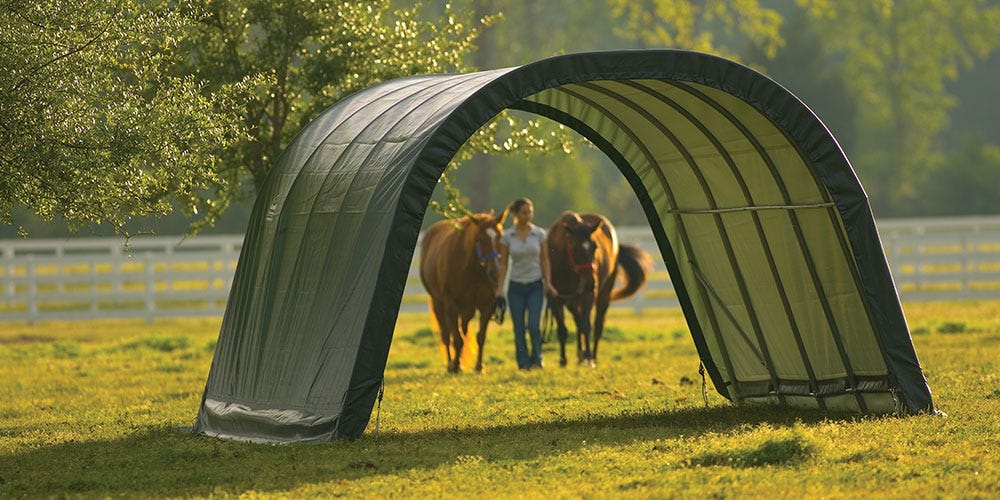

Using a Livestock Shelter to Protect Your Horses
While keeping a horse in the barn would protect it from most weather issues, this isn’t a good solution. Horses need fresh air and exercise to stay healthy. Barns can become stuffy, and if there isn’t enough ventilation, being in the barn can expose horses to dust and bacteria that can cause excess mucus and respiratory inflammation.
Keeping a horse in a barn or stable for too long can cause mental issues due to lack of stimulation. In addition, the lack of movement may lead to problems with their colon or intestinal health issues. While these closed shelters are fine for sheltering horses at night, horses really need to be out in the pasture during the day.
So, how do you keep them safe? A livestock shelter is a perfect solution! These lightweight, portable shelters can provide ideal protection throughout every season.
Warm-Weather Protection
To provide proper summertime care, you’ll want to make sure your horse has access to a shaded area that is well ventilated. Temperatures can feel as much as 15 degrees cooler under shade, making a major difference for a horse that is starting to overheat.
The shade you choose should be large enough, so the horse has plenty of room to rest and graze under cover and away from the hot sun. A portable, durable livestock shelter is a cost-effective way to keep your horse happy and healthy all summer long.
Deterring Biting Pests
Heat isn't the only issue you need to worry about during the summer. Biting pests like black flies, horse flies, and deer flies also thrive in areas where it’s hot, and the air is still. Once these pests start to bite, they create bleeding and scabbing. Not only is this painful to the horse, but the bleeding can attract even more flies.
Giving your horse access to an open shelter can help protect them from attacks from biting pests without having to confine them indoors.
Cool-Weather Protection
As the temperatures start to drop, you’ll need to change your focus to fall horse care. This includes making sure they get enough exercise, checking with the vet about deworming and vaccination recommendations, and taking care of their hoofs. You’ll also want to start thinking about how you’ll keep your horse safe and comfortable during the cold winter months.
Keeping Your Horse Warm and Dry
Adding a run-in shed or corral shelter to your property is a great way to keep wind, sleet, and rain from causing unsafe drops in body temperature. In fact, horses that have access to an outdoor shelter will lose 20% to 30% less body heat than horses that are outdoors without any protection.
Providing shelter will give your horse somewhere to go during heavy rains and snowstorms. This will keep them from losing that all-important protective layer of air. When the bad weather subsides, they can come back out and remain comfortable even if the temperatures are quite low. To create extra protection, you should position your equine shelter away from the normal wind patterns. This will provide ample ventilation while keeping your horse protected from the strongest winds.
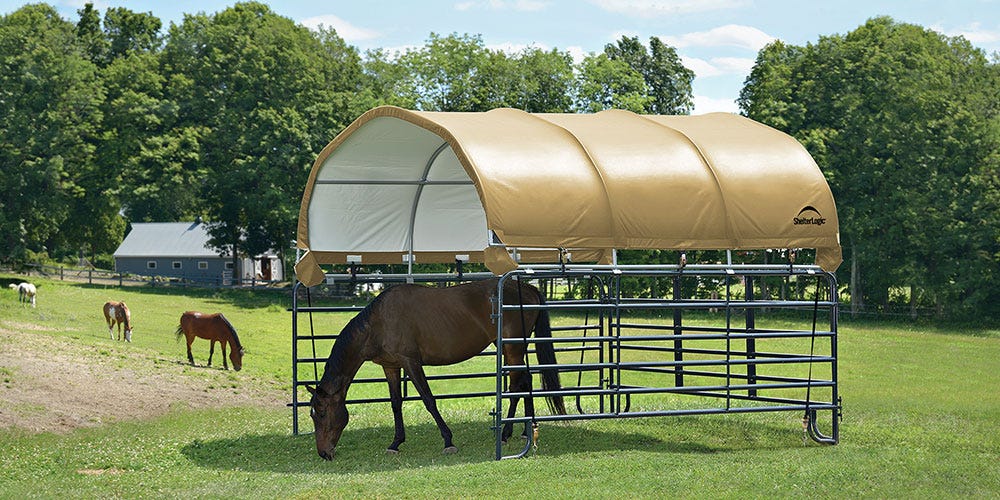

Types of Livestock Shelters
There are two primary types of portable livestock shelters – corral shelters and run-in sheds. Both of these options are easy to move around, so you can place them where they’re most useful for the current conditions.
Choosing the right livestock shelter for your needs is all about understanding the basics of how each one works and how to choose a durable model that will serve you well season after season.
Corral Shelters
Corral shelters attach to existing corral panels, turning your traditional holding unit into a comfortable shaded retreat. They’ll also work well with your existing fences, giving you even more flexibility to use the shelter in a variety of locations.
These multi-purpose shades are one of the most convenient and creative equine innovations. Not only can you use them to provide shelter for your horses, but you can also use them to store your feed, hay, farm equipment, and more. If you want to create additional protection, you can also purchase a separate enclosure kit. This will give you the option of having an open cover during the warmer months and creating an extra barrier once it gets cold.
How to Choose the Best Corral Shelters
There are many different brands of corral shelters on the market, so it’s important to pay attention to the features of each option before making your decision. ShelterLogic’s corral shelters are all-steel units that are either powder-coated, premium powder-coated, or galvanized. This protects the unit from corrosion and rust, which is critical when shopping for a product that will need to stand up to the elements for extended periods of time.
They also feature a tough rip-stop fabric specially sealed to improve water resistance and has a UV treatment to prevent fading and premature aging. This will help your shelter look great for many years. Ratchet-tite tensioning helps keep the cover on tight, which will help prevent tearing, and protective boots on each corner of the structure will help prevent accidental injuries.
Run-in Sheds
A run-in shed is a completely covered frame with openings on each side. This allows the horse to easily access the shaded area from either end. It’s a reliable and affordable investment that is a must-have for any equine or livestock owner. Much like corral shelters, you can also use these structures to cover farm equipment, hay, feed, and more.
How to Choose the Best Run-In Shelter
When shopping for a run-in shelter, you’ll want to find one that will last for many seasons. ShelterLogic’s run-in shelters are made from a sturdy powder-coated steel frame. It also has a three-layer polyethylene ripstop fabric cover. The high-profile white interior lining brightens the area under the cover, offering additional illumination.
These shelters are designed to be extremely easy to assemble. They’re made of swedged tubing and slip-fit connectors so that you can have them up and ready to use in no time. There’s also bolt hardware at every connection, giving you the peace of mind that comes with knowing your structure will stay sturdy and strong.
Shop for Portable Livestock Shelters
If you don’t already have a portable livestock shelter on your property, now is the perfect time to get one. Don't wait for the weather to impact your horse, take a look through our high-quality equine and livestock products today!

